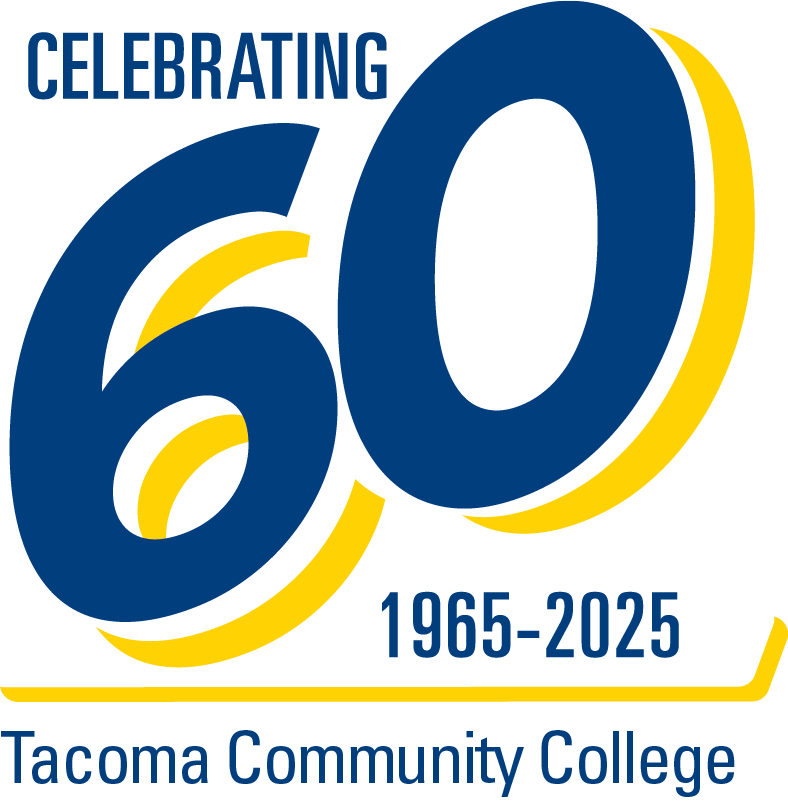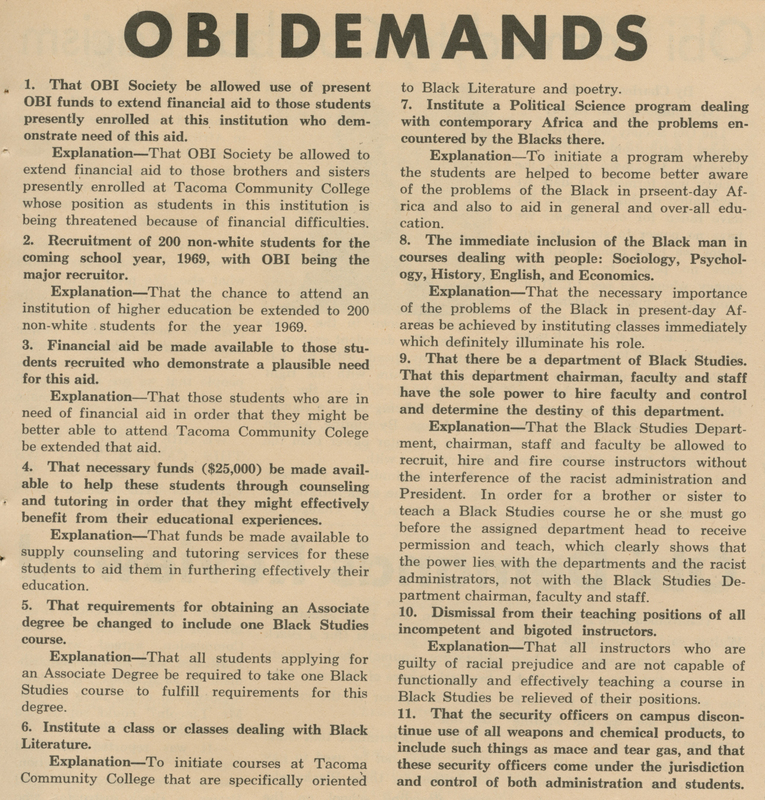Black Student Advocacy Leads to Change
In May 1969, the TCC Obi Society – the college’s Black student union – and allied students marched to the president’s office to present eleven demands on behalf of Black students. These demands called for better representation of Black people in the student body, faculty and staff, and the college curriculum. They were also the culmination and refinement of a year of activism by the group, which had begun the prior year with a previous set of eight, less-specific demands published in the student newspaper.6 By responding, TCC laid the foundation of our commitment to equity, diversity and inclusion.
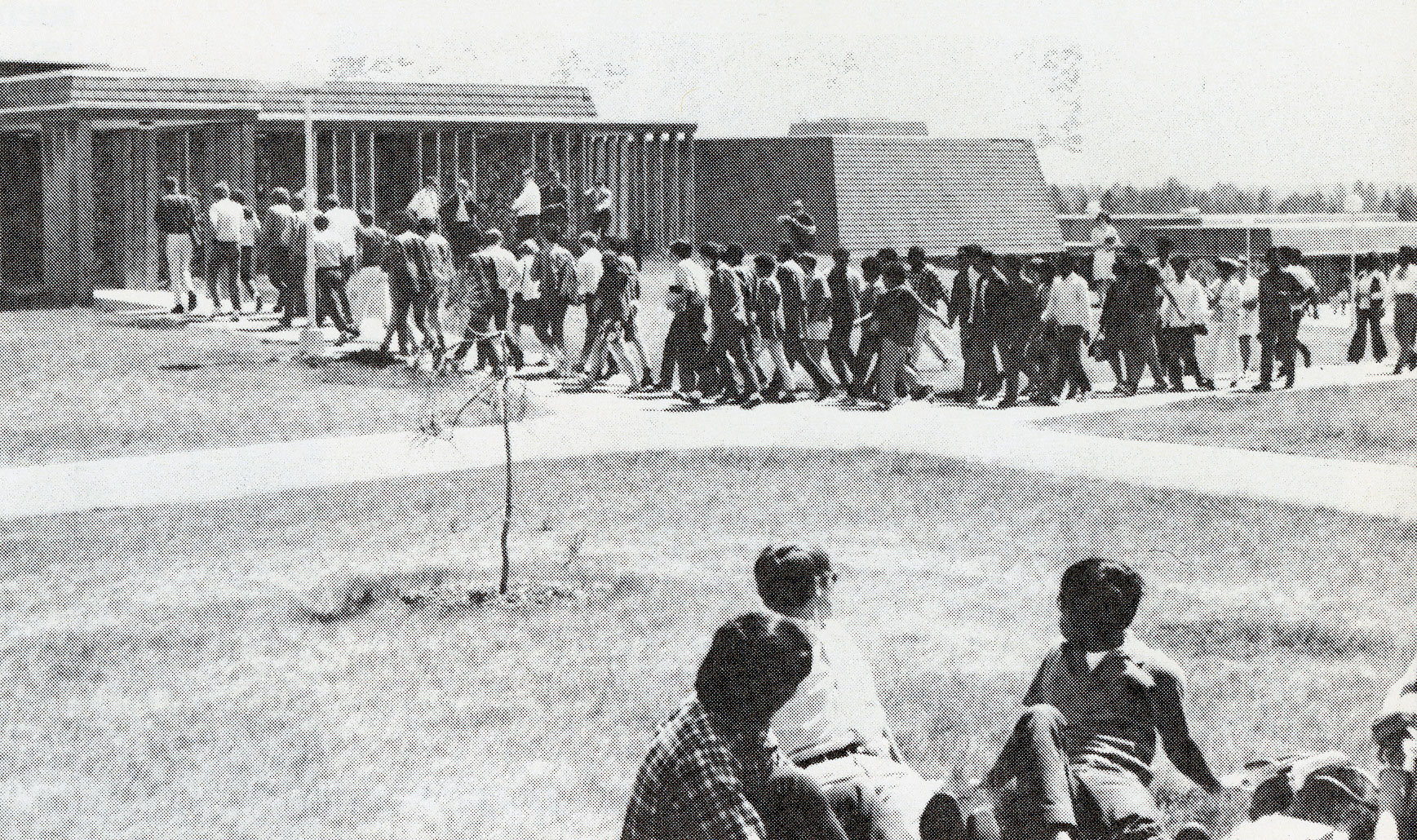
Students march on campus to deliver the Obi Society's 11 Demands, 1969
Obi members and alumni took the lead in many resulting actions, including conducting seminars for TCC employees, serving on a new Minority Affairs Curriculum Committee, exploring the historically Black Hilltop neighborhood's educational needs with neighboring universities as part of the Model Cities program,7 and operating a new Ethnic Studies Laboratory in the Library & Resource Center.8 Students from underrepresented ethnicities were hired for peer outreach to their communities in Summer 1972.9
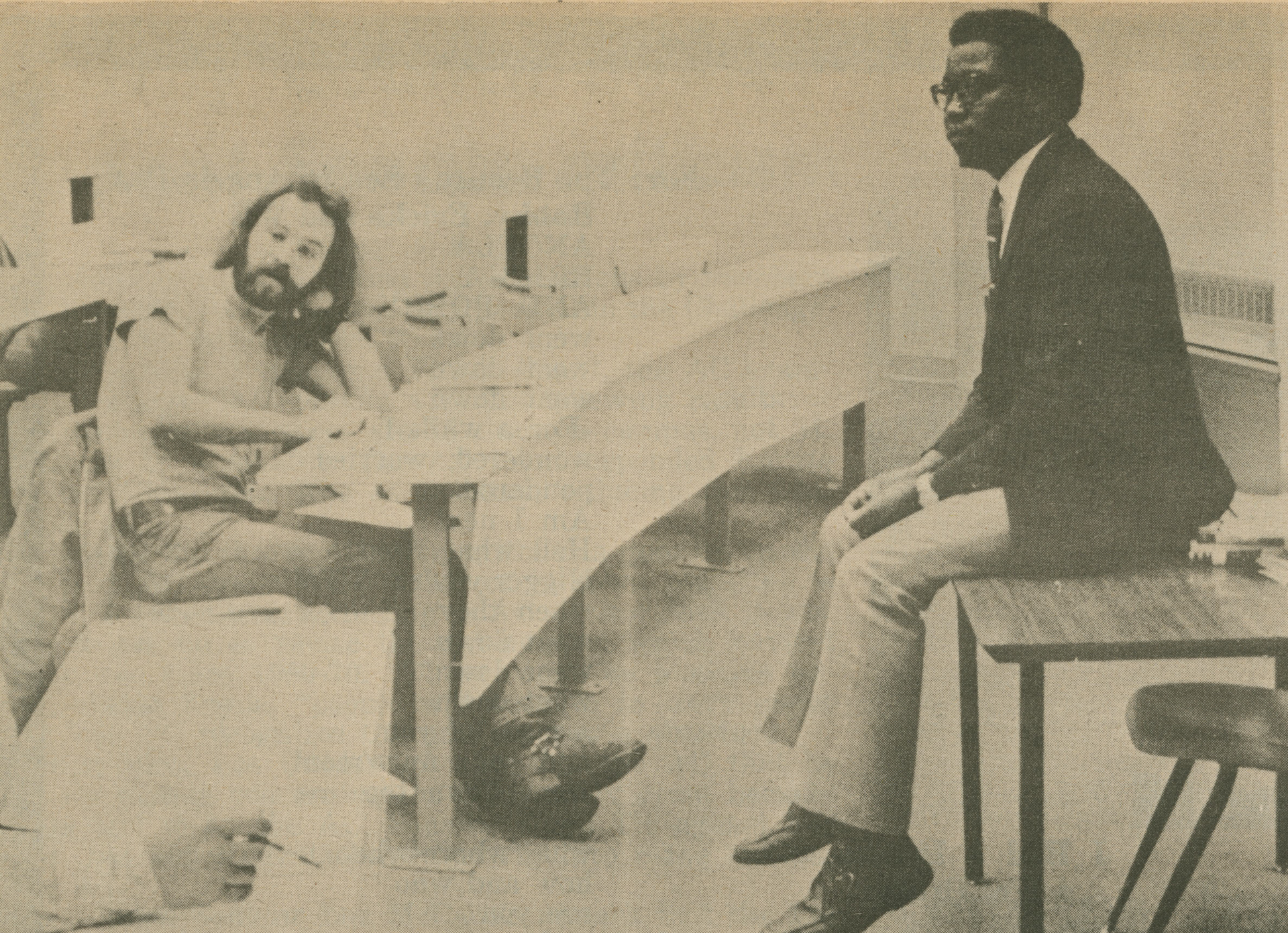
Swahili instructor Peter Wanguri, 1972
Changes in the Classroom
The college had been working on expanding the curriculum since the Obi Society first raised concerns in 1968, and a new Minority Affairs Curriculum Committee was created the following year that included student representation.10 Over the next few years, TCC added courses in literature, history, and language that better represented the heritage and interests of its learners. Topics included Black writers, contemporary American fiction, world literature, Chicano writers; African, Asian, Chinese, Japanese, Latin American, and African-American history; Chicano culture; and Chinese, Japanese, and Swahili languages.11
Meanwhile, the library became the hub for a county-wide project to create an extensive bibliography of Black authors, artists, and other creators, published in 1969,12 and began making concerted efforts to expand the library collection in Black, indigenous, Asian American, and Latine subject areas,13 with the assistance of the Friends of the Library.14 In February 1972, the Board approved an affirmative action policy to support more equitable hiring practices both within the college and for vendors and contractors15 (the latter preempting a similar state initiative by eight years).16 In the fall of that same year, TCC hired its first counselor to specifically serve minority students, Arthur Rick Rico.17
Images: A Bibliography of Afro-American Print and Non-Print Resources in Libraries of Pierce County, Washington (1969) and Issei, Nisei, Sansei, Yonsei: A Bibliography of Japanese Holdings (1972).
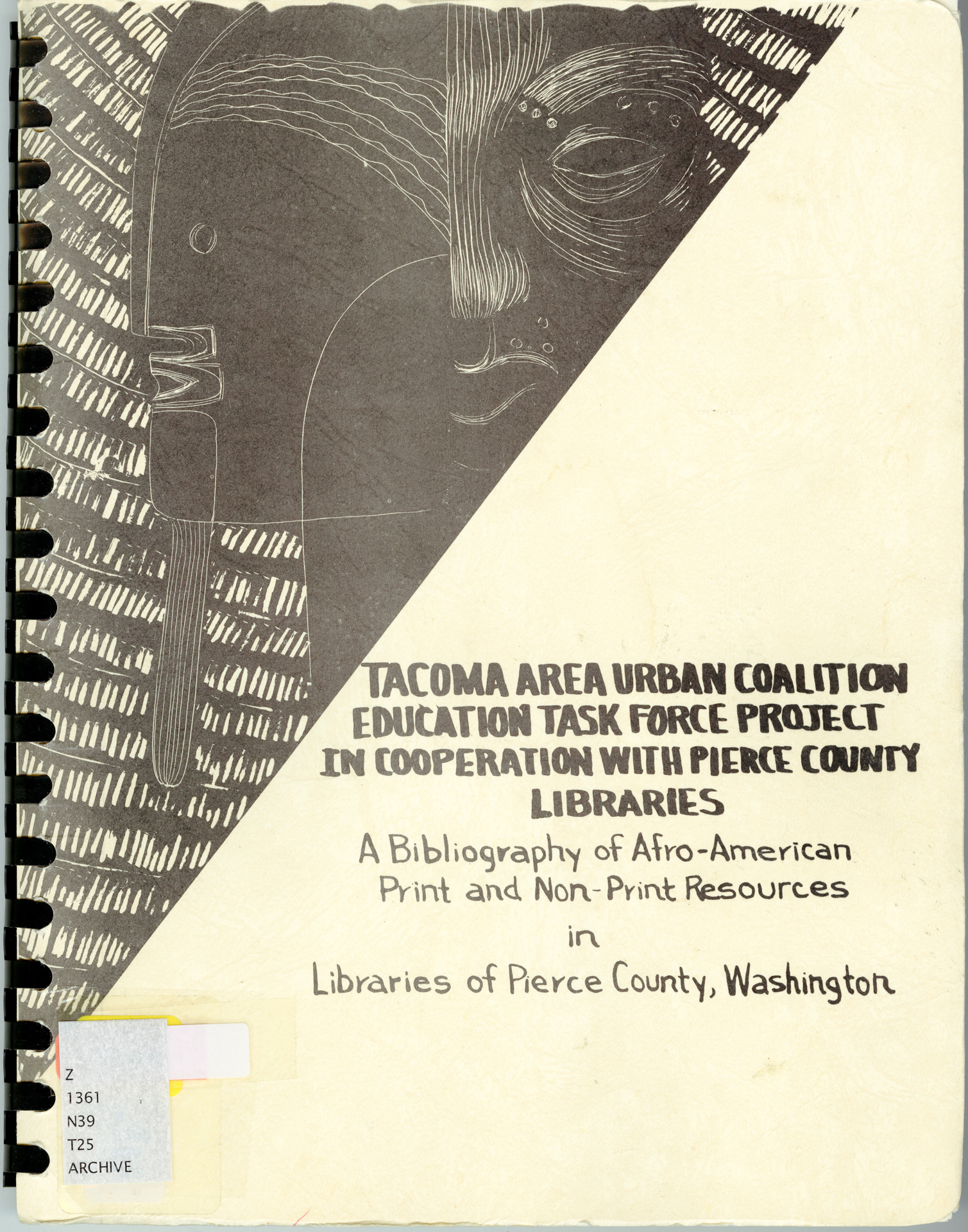
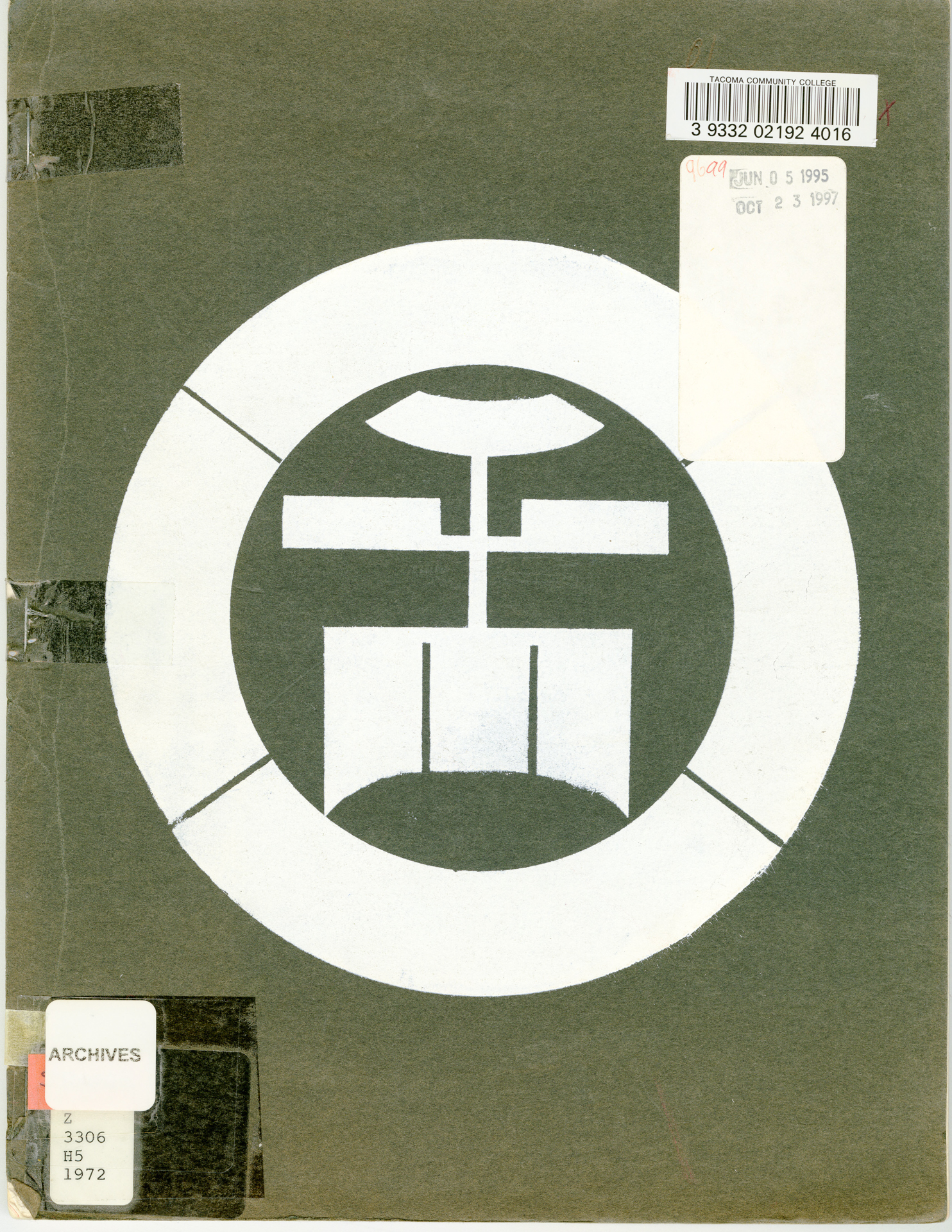
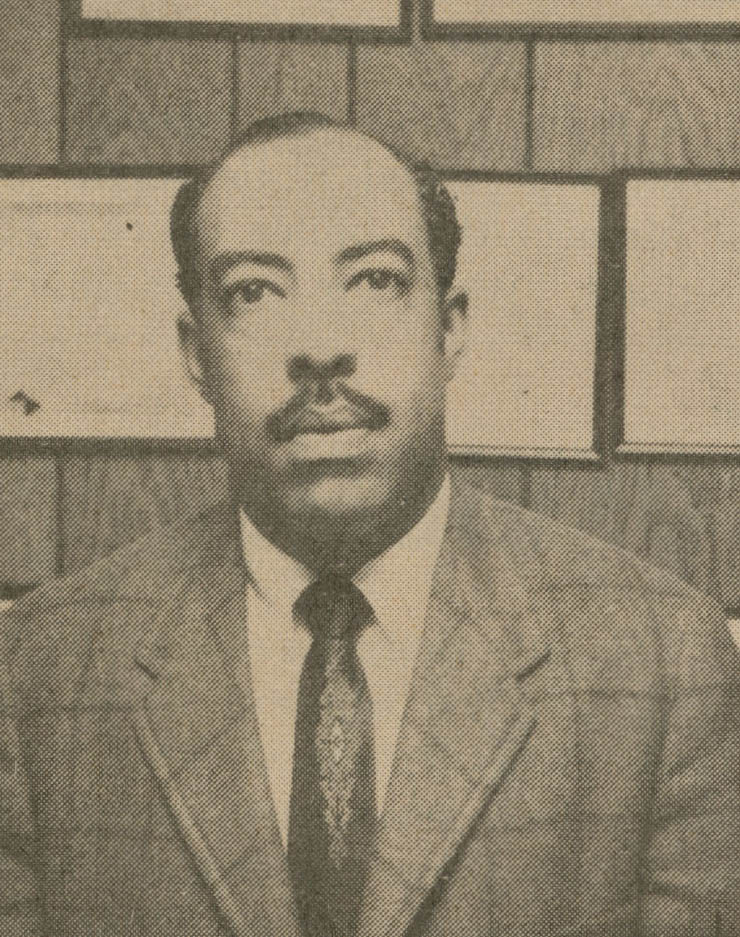
Dr. Dewey Tuggle, Jr.
Diversifying the Board
In April 1969, Chairman Frank Cooper resigned from the TCC Board of Trustees.18 Obi Chairman and Tacoma Area Urban Coalition Co-Chairman James Walton immediately reached out to the Office of the Governor to advocate for the appointment of a Black citizen to fill the new vacancy.19 Gov. Evans quickly responded by appointing Dr. Dewey Tuggle, Jr., a community-focused dentist retired from the Air Force.20 Japanese-American minister and Tacoma Community House director Rev. Robert Yamashita was appointed later that same year.21
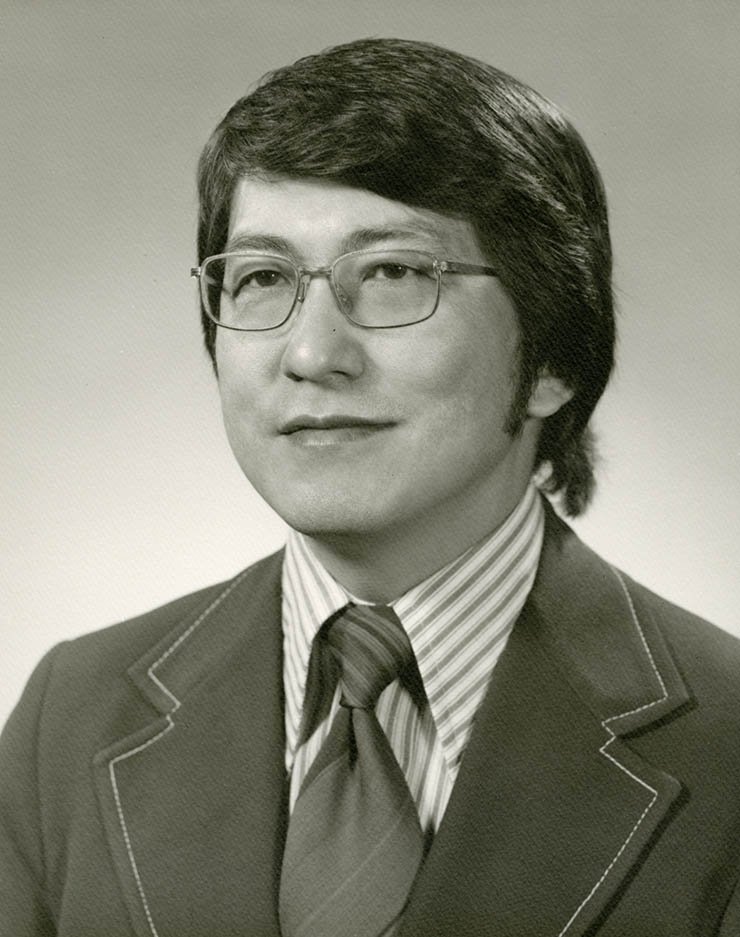
Rev. Robert Yamashita
Community partnerships were essential to these successes. TCC collaborated with area colleges to form the Puget Sound Minority Affairs Consortium, which collaboratively pursued grants to support program development at the member campuses.22 TCC worked with the non-profit Metropolitan Development Council to jumpstart an Afro-American Cultural Center23 in the Hilltop neighborhood,24 which supported the community by providing activities, information and referrals.25
In an extensive report on TCC students to the Board in 1977, Dean of Student Services Richard Batdorf noted that "today's student is five times as likely to be a member of a racial or ethnic minority group" than when TCC last created a student profile a decade earlier, and showed a dramatic increase in women.26
